With ELASHY, sodium hyaluronate may help correct irregular astigmatism following LASIK
Ray tracing significantly improved in all study patients.
ALICANTE, Spain — Patients with irregular astigmatism following laser in situ keratomileusis (LASIK) appear to benefit from excimer laser retreatment assisted by sodium hyaluronate 0.25%, according to the results of a limited study of a technique dubbed Excimer Laser Assisted by Sodium HYaluronate (ELASHY) by its developer.
“We have found this new technique very useful,” said Jorge L. Alio, MD, PhD, director of the Instituto Oftalmologico de Alicante here.
Twenty eyes were included in a prospective study of the technique. All patients had previously undergone LASIK that had induced irregular astigmatism.
“There was a sharp decrease in best corrected visual acuity and there were a number of symptoms that resulted from this irregularity of the cornea” in the study patients, Dr. Alio said.
Stability of the induced astigmatism was observed for at least 6 months with C-Scan corneal topography with ray tracing (Technomed, San Clemente, U.S.A.) and with the EyeSys Premier (Irvine, U.S.A.) 2000 Corneal Analysis System. Pachymetry of at least 420 µm in the thinnest corneal sector was noted in all cases.
The investigators used the Bausch & Lomb (Claremont, U.S.A.) Technolas 217C PlanoScan laser with flying spot ablation for the ELASHY retreatments. Ablation was assisted by a mask of sodium hyaluronate 0.25%.
“The irregular corneal surface was significantly improved in all cases” after 6 months of follow-up, Dr. Alio reported. The corneal uniformity index (CUI) improved from 35 ± 0.5% to 98 ± 0.5% (P<.01). Furthermore, best corrected visual acuity improved from 20/200 to 20/30 (P<.01).
Visual acuity improves after 1 month
Study patients had poor visual acuities stemming from irregular flaps, and they were not suitable for Topolink (Technomed). “These patients started improving 1 month after surgery, and after the second month, significant results were achieved,” said Dr. Alio. At 6 months, “the results were even better,” he said. “There is an evolving result.”
Moreover, both corneal uniformity and data of the corneal acuity from the Holladay II map, “were rated very well,” Dr. Alio said.
Ray tracing was used to evaluate the surface quality of the cornea and to compare it with the Predicted Corneal Acuity and the CUI. “The corneal ablation is equal to three-fifths (60%) of every 100 µm introduced in the software of the excimer laser,” Dr. Alio conveyed. “Ray tracing significantly improved in all cases.” In addition, “we found that the symptoms of the patients, the visual acuity, and the overall situation of the patient correlates exceedingly well with the evolution of the ray tracing. At 6 months, “we had almost normal behavior of the ray tracing in many of the cases.”
Simple technique
Dr. Alio said that using ELASHY is “very simple.” After topical anesthesia, “we simply lift the flap or we apply the one drop of hyaluronic acid precisely on the epithelium.” The surgeon also applies one drop of fluorescein “to detect where we meet on the cornea and where we meet on the viscoelastic. With practice, you can recognize that very easily and in this way you can follow the topography” without relying on an assisted-topography system.
Excimer laser ablation is performed in increments of 25 µm. “We applied this by calculating the area to be ablated so it would equal the topography at a 6-mm optical zone,” Dr. Alio explained.
“The study shows that this new technique of using sodium hyaluronate with an excimer laser is safe and quite efficacious,” Dr. Alio said. “All patients truly improved and none of them lost any lines of best corrected visual acuity. On the contrary, all patients gained visual acuity.”
Excimer Laser Assisted by Sodium HYaluronate (ELASHY): before and after | ||
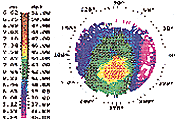 | 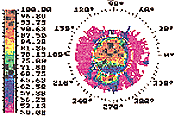 | 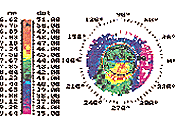 |
| Case 1: Irregular astigmatism after LASIK — (top) preoperative topography. Decentration of bad quality ablation of hyperopic LASIK. ELASHY performed at stromal level after lifting the flap. (Center, bottom) Preoperative ray tracing. | ||
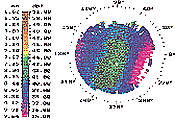 | 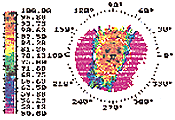 | 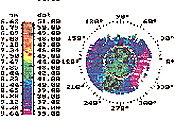 |
| Case 1: Irregular astigmatism after LASIK — (top) postoperative topography post-ELASHY.(Center, bottom) Postoperative ray tracing post-ELASHY. | ||
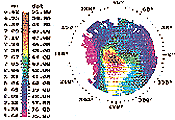 | 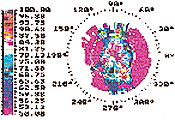 | 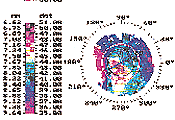 |
| Case 2: Irregular astigmatism after LASIK — (top) preoperative topography. Ablation over an irregular flap. Surface ELASHY with no new LASIK (ablation performed from the epithelium).(Center, bottom) Preoperative ray tracing. | ||
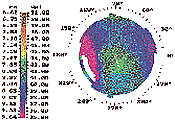 | 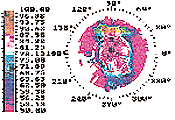 | 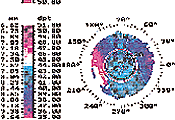 |
| Case 2: Irregular astigmatism after LASIK — (left) postoperative topography (after surface ELASHY). (Center, right) postoperative ray tracing. | ||
For Your Information:
- Jorge L. Alio, MD, PhD, is professor and chairman of ophthalmology, Universidad Miguel Hernandez, Alicante, Spain, and medical director of the Instituto Oftalmologico de Alicante. He can be reached at Avda de Denia 111, Alicante 03015, Spain; +(34) 96-515-4062; fax: +(34) 96-515-1501; e-mail: jlalio@oftalio.com. Dr. Alio has no direct financial interest in any of the products mentioned in this article, nor is he a paid consultant for any companies mentioned.
